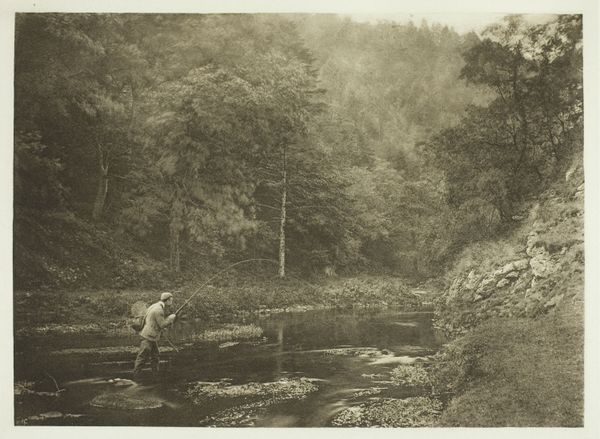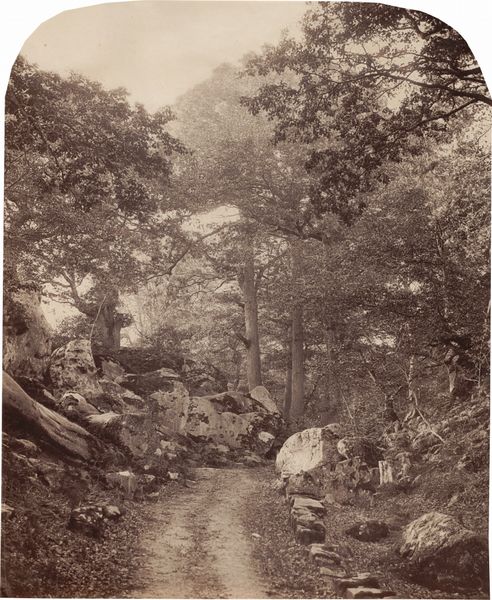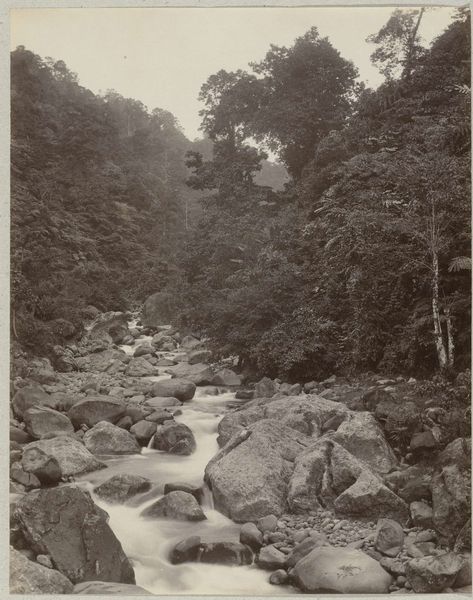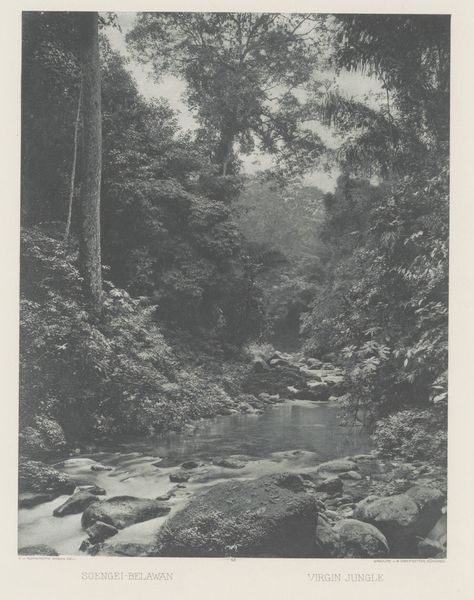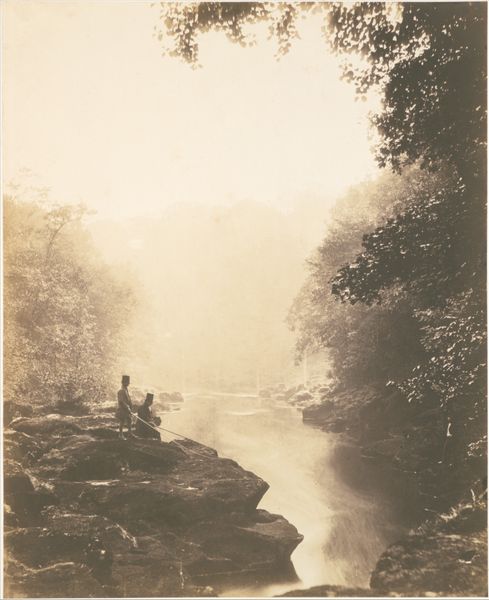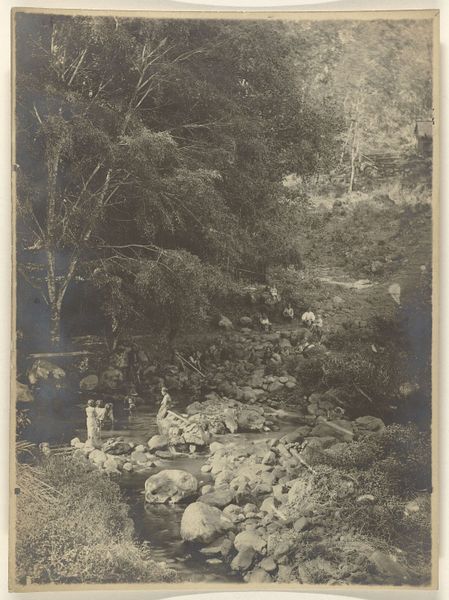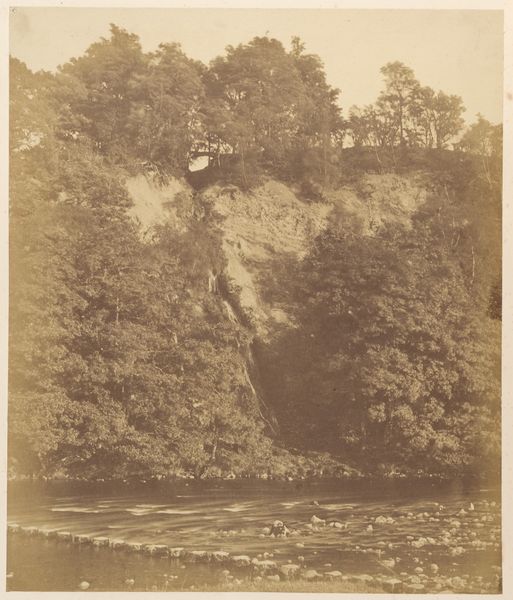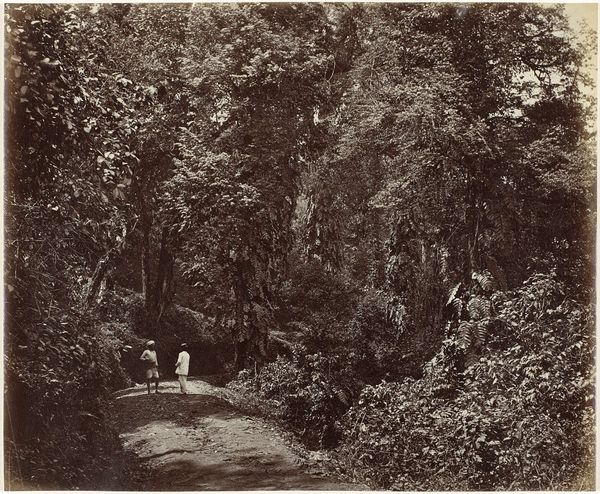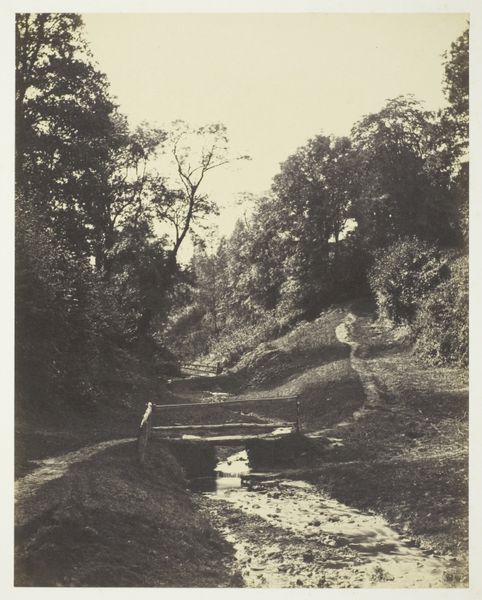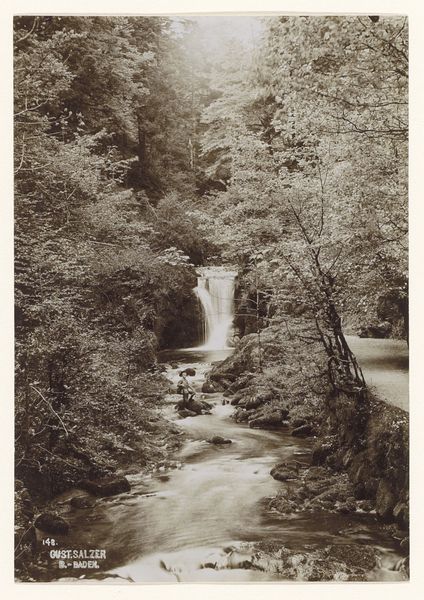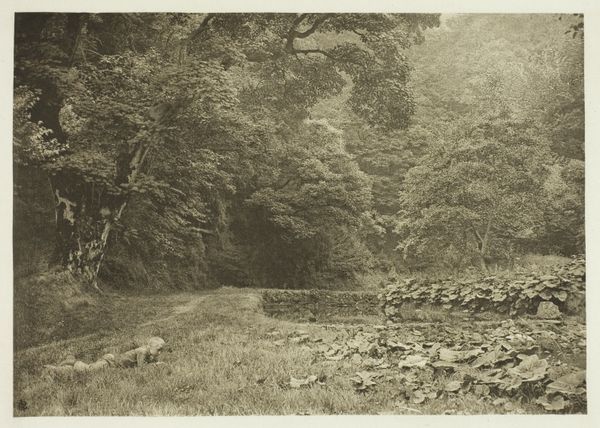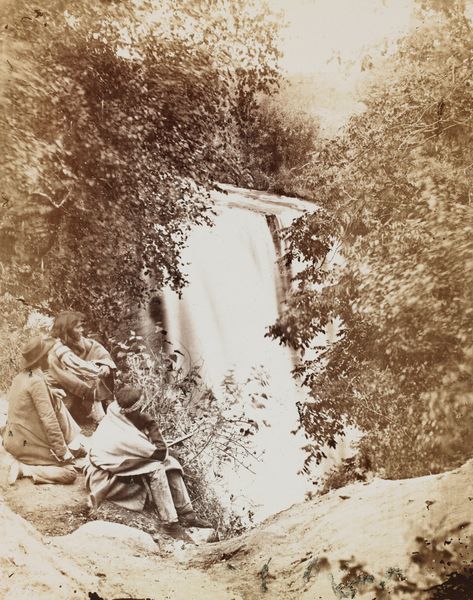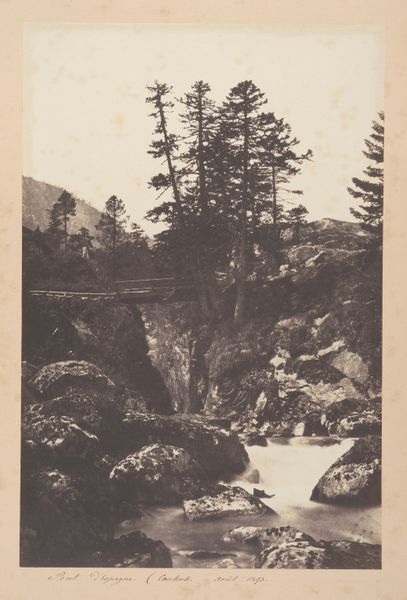
Dimensions: Image: 24.7 × 17.8 cm (9 3/4 in. × 7 in.)
Copyright: Public Domain
Editor: This is "The Upper Fall," taken sometime between 1853 and 1856 by John Dillwyn Llewelyn. It’s currently at the Metropolitan Museum of Art. There’s such a stillness to it, almost a meditative quality, with this figure quietly observing the waterfall. What strikes you about this photograph? Curator: Observe how Llewelyn uses the technical constraints of early photography to his advantage. The limited tonal range and long exposure imbue the scene with a softened, almost dreamlike quality. Note also the composition, wherein the subject is relegated to a corner—seemingly secondary to the cascading water. Editor: So you’re saying the waterfall is really the primary subject, despite the man being present? Curator: Precisely. The very texture of the water—smoothed and blurred due to the long exposure time— becomes a visual element divorced from its representational purpose. It's about the manipulation of light and texture rather than just documenting the scene. Consider how different shutter speeds today alter a nearly identical shot. Editor: I see what you mean! The blurring adds an element, makes it look much softer than real life. The trees create depth, almost framing the waterfall. Is there something about the rule of thirds in play here? Curator: Indeed, the intentional positioning of the waterfall within the frame activates a sense of dynamic visual balance, creating an engaging surface tension. The foreground details create a strong sense of spatial recession which further highlights the tonal contrast present within the work, do you agree? Editor: I do now. That makes me consider photography with a new perspective! I learned a lot from this piece! Curator: And I, revisiting the fundamental elements. Thank you!
Comments
No comments
Be the first to comment and join the conversation on the ultimate creative platform.
